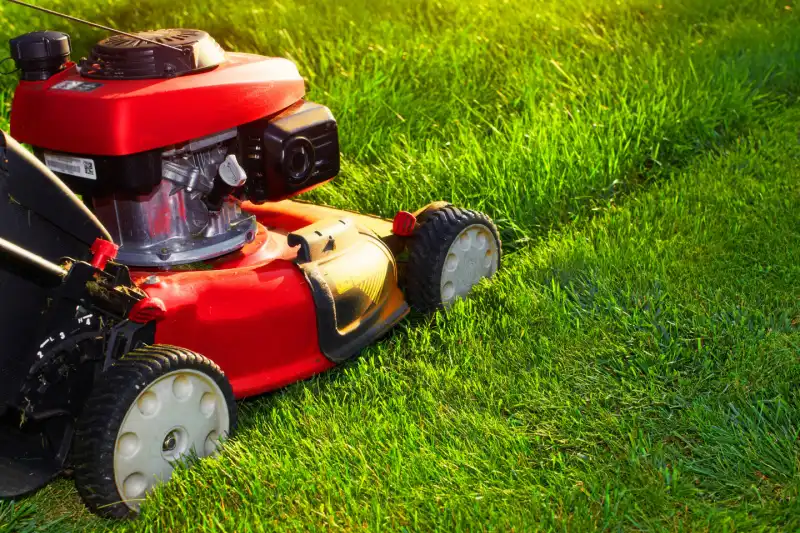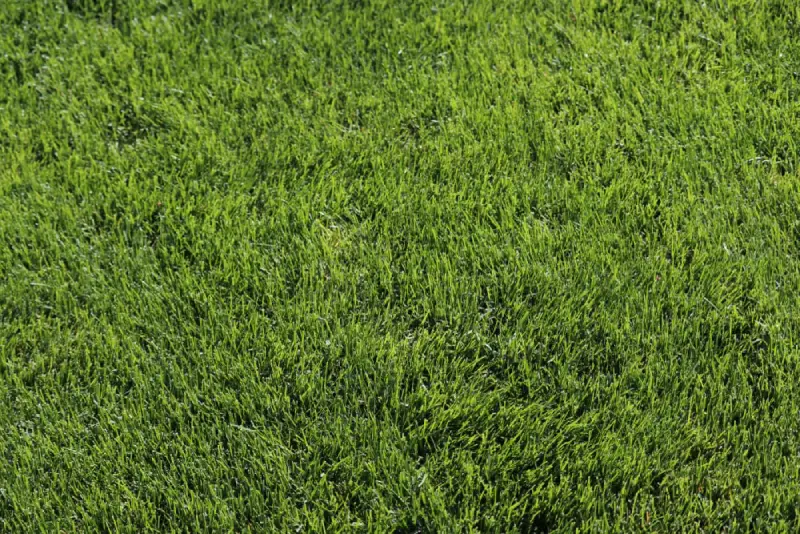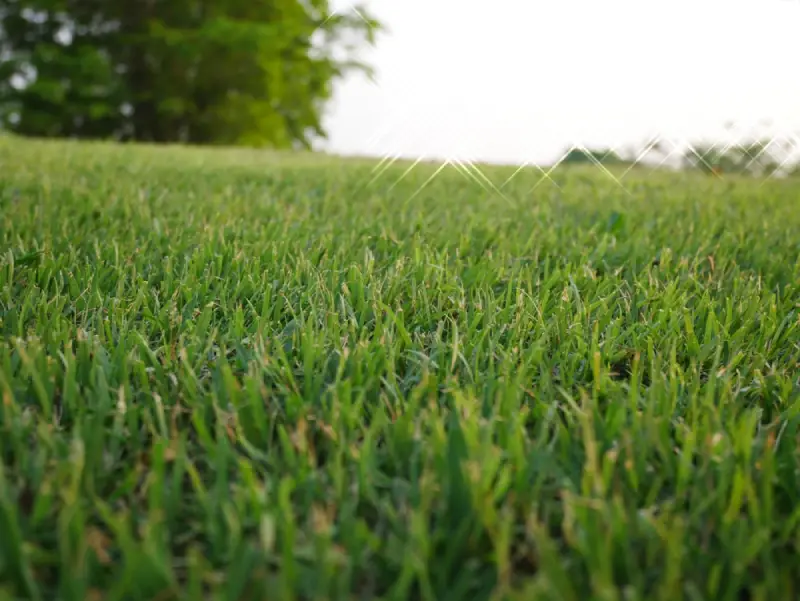
The Grounds Guys recommend optimal grass cutting heights to promote a healthy, resilient lawn in Canada.
|
If you love your lawn, then you already know that mowing is crucial to maintaining a healthy and attractive yard. Regular mowing keeps grass at an optimal height, promoting strong root development and encouraging a lush, dense lawn. Cut your grass too low, and you could damage it by taking away the leaf surface your grass needs to absorb sunlight. Let your grass grow too tall, and it makes your yard look unkempt. So, what is the best height to cut grass?
Thankfully, your local lawn care experts at The Grounds Guys® have some answers. However, as you might expect, those answers depend on several factors, including the type of grass in your yard and the season. So let’s cut to the chase and get to the bottom of the best height to cut grass.
Table of Contents:
The Best Height to Cut Grass
How high should you cut your grass? Before answering that question, it’s important to understand that grass varieties fall into one of two categories: cool-season and warm-season grasses.
Cool-Season Grasses

Cool-season grasses grow most actively during the cooler months of spring and fall. They can tolerate cold winters but tend to go dormant in the summer. The vast majority of Canadian landscapes feature cool-season grasses, including:
- Kentucky bluegrass
- Canadian bluegrass
- Perennial ryegrass
- Fescues
Cool-season grasses do best in moderate temperatures. When temperatures drop below 10–12° celsius or above 32°C their growth will slow significantly or completely stop. In the summer, temperatures that reach 25°C can stop root growth, and 32°C can stop shoot growth. When these grasses are dormant, the surface may turn brown and the grass may appear to be dead. However, the grass is still very much alive. This stage is just the grasses way of dealing with extreme temperatures. Once temperatures become more moderate, these cool-season grasses will begin growing again.
Warm-Season Grasses

As the name suggests, warm-season grasses are better suited to regions with hot summers and mild winters. This type of grass grows most actively during the summer months and tends to go dormant in the winter. Warm-season grasses are much more common in the southern regions of the United States, but they can be found in small pockets of Canada, such as Southern Ontario and Southern British Columbia. Common warm-season grasses are:
- Bermuda
- Zoysia
- St. Augustine
These warm-season grasses grow best in temperatures between 23–32°C during the summer. Many warm-season grasses go dormant in cooler weather and like cool-season grasses, they may turn brown until more favourable weather returns.
Grass Cutting Height Chart
The height at which you cut grass will largely depend on whether you have cool or warm-season grass in your yard. While the best height to cut grass will depend on a number of factors, the following chart offers a general rule of thumb for the most common grasses in Canada:
- Kentucky Bluegrass: 7.5 - 10 cm (3 - 4 in)
- Canadian Bluegrass: 6 - 9 cm (2.5 to 3.5 in)
- Ryegrass: 4 - 6 cm (1.5 - 2.5 in)
- Tall Fescue: 10 - 15 cm (4 - 6 in)
- Red Fescue: 6 - 9 cm (2.5 - 3.5 in)
- Bermuda Grass: 5 - 6.5 cm (2 - 2.5 in)
Seasonal Grass Cutting Heights
While you can get by just following the grass height rules of thumb above, many homeowners don’t realize that the ideal height to cut grass changes with the season. Each season creates different conditions for your grass, and the grass itself is in a different part of its growth cycle so you’ll need to adjust the cutting height accordingly. This means that the best height to cut grass isn’t the same throughout the year. Here are the recommended cutting heights for each season based on the type of grass you have.
Spring Grass Height
Spring is the prime growing season for cool-season grasses across Canada. Be prepared to mow often, especially if your region gets a lot of rain during this time of year. To keep your lawn healthy and strong, keep cool-season grasses at a height between 7.5 and 10 cm (3 - 4 in) and warm-season grasses at 5 - 6.5 cm (2 - 2.5 in). It’s also important to avoid cutting your grass too short, as this can cause damage and hinder its ability to properly absorb sunlight, nutrients, and water.
Summer Grass Height
What height should grass be cut in summer? Cool-season grasses tend to struggle in the heat of summer and often turn brown and go dormant. You’ll want to let your cool-season grass grow a little taller during warm weather to provide more shade for the soil and to help your lawn retain moisture during hot weather. Maintain a height of 9 to 11.5 cm (3.5 to 4.5 in) for cool-season grasses and 5 - 6.5 cm (2 - 2.5 in) for warm-season grasses during this time of year.
Fall Grass Height
As temperatures cool in the fall, you can gradually lower your mowing height to account for the faster growth of your lawn. This will allow your grass to prepare for the eventual winter dormancy and encourage strong root growth. Aim for a grass height of 6.5 cm (2.5 in) for cool-season grasses and up to 5 cm (2 in) for warm-season grasses. Cool-season grasses will grow faster during this time, so you may have to fire up your mower more often to maintain the ideal grass height.
Winter Grass Height
Both warm-season and cool-season grasses go dormant during the Canadian winter months. If there is no snow cover, you can maintain the same mowing height as the fall. However, avoid mowing when the grass has a layer of frost or when the ground is wet and/or saturated. Doing so could damage your lawn.
Related Article: Winter Pests and Lawn Diseases
Best Height to Cut Grass to Prevent Weeds
Cutting grass to an ideal height helps it grow healthy and strong. It also creates a dense lawn that is better equipped to crowd out weeds. Maintaining the proper height for your lawn will encourage deep root growth that allows your grass to outcompete weeds for water and nutrients. Regular mowing also helps prevent weeds from growing tall enough to produce seeds, which will eventually spread throughout your yard.
One of the best ways to prevent weeds is to keep cool-season grasses between 6.5 and 9 cm (2.5 to 3.5 in) and warm-season grasses between 5 - 6.5 cm (2 to 2.5 in). Maintaining these heights will encourage healthy growth, keep weeds at bay, and help your lawn fight disease.
How High Should You Cut Grass After Fertilizing?
.webp)
Applying fertilizer to your lawn is one of the best ways to supercharge its growth. Once the fertilizer has been absorbed by your lawn, you can mow at a slightly higher height. This will allow the grass to utilize the extra nutrients provided by the fertilizer more efficiently. Cutting grass too low after fertilization can stress the grass, which stunt its growth and cause damage. Keeping your grass higher after fertilization reduces stress, allowing it to grow thick and strong.
Consider keeping cool-season grasses at 7.5 - 10 cm (3 to 4 in) and warm-season grasses at 5 to 6.5 cm (2 - 2.5 in) after applying fertilizer.
Not Sure What Height to Cut Grass? Call in the Experts
So, how high should you cut grass? As we mentioned, the answer is not always easy. You can’t take a one-size-fits-all, or in this case, a one-cut-fits-all approach. Seasonal changes, type of grass, the amount of precipitation, when you fertilize, and other factors will all determine the ideal cutting height for your lawn. So, it’s understandable if you’re not sure what is the perfect height to cut your lawn. Especially if you don’t know what type of grass is growing in your yard.
The good news is, you don’t need to be a lawn care expert or know the best height to cut grass when you use The Grounds Guys. Our local experts will identify your grass type and factor in seasonal conditions so they know exactly how often and how high to cut your grass. Your lawn will get the perfect cut every time!
Our local teams proudly provide ongoing residential and commercial lawn care services throughout Canada. We also offer many seasonal services, including fertilization, aeration, weed and pest control, and more. Request a free estimate today.
This article is intended for general guidance only and is not applicable to every situation. You are responsible for determining the proper course of action for your property and situation. The Grounds Guys are not responsible for any damages that occur as a result of advice and/or guidance derived from its blog content.
The Grounds Guys services may vary by location. Contact The Grounds Guys franchise nearest you for more information.